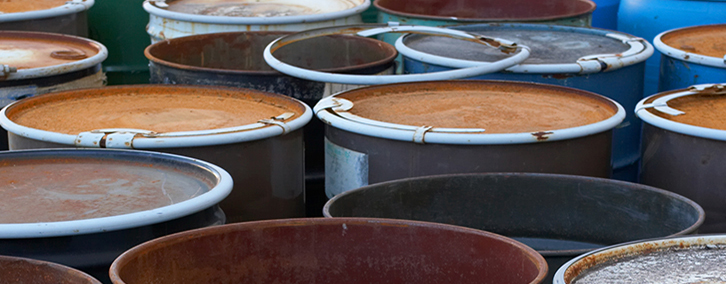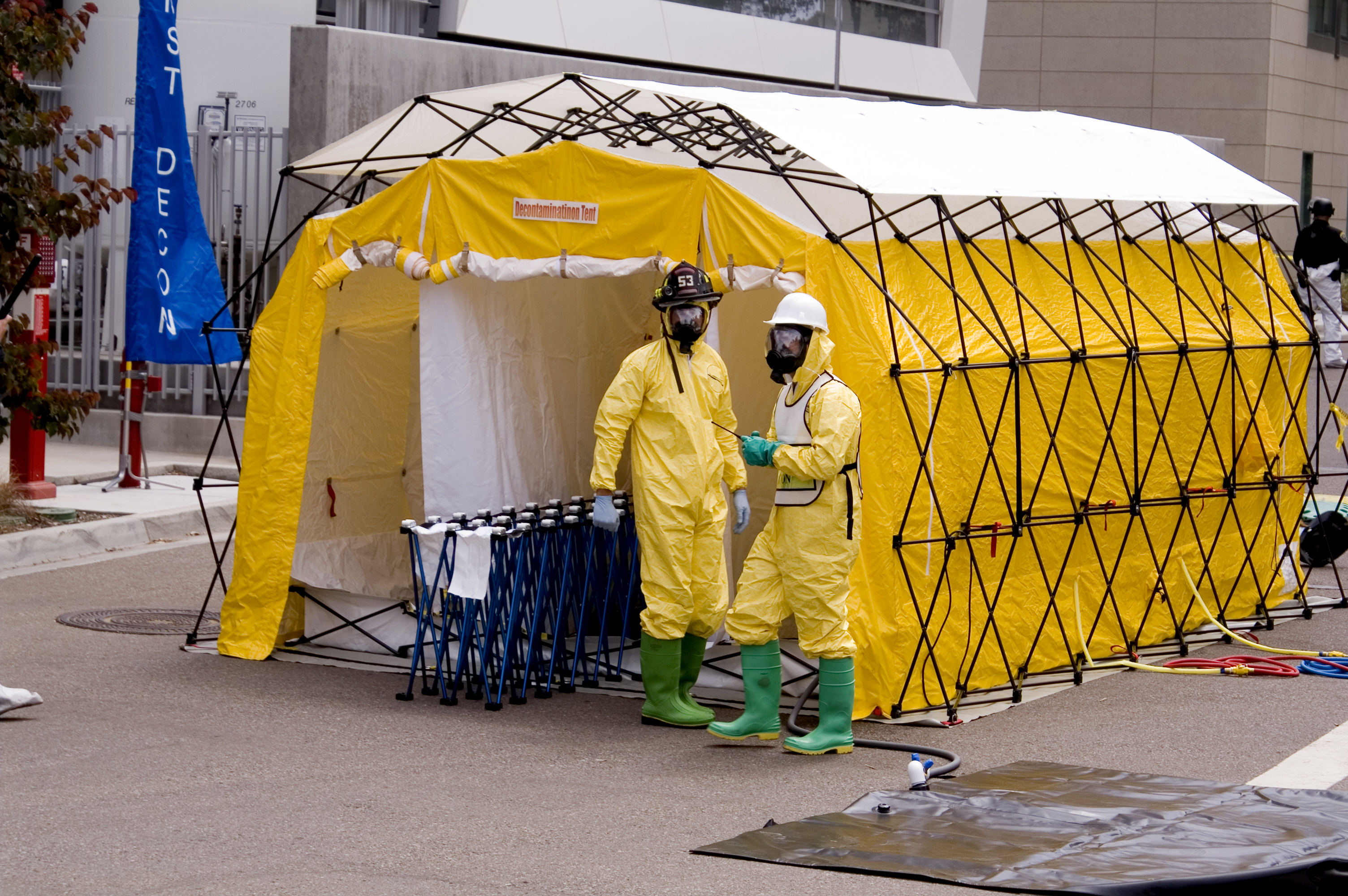To remediate the effects of chemical weapons agents (CWAs), forensic scientists must understand how these hazards behave in their surroundings. At the Forensic Science Center (FSC), mitigation activities include measuring and predicting exposure, characterizing exposure events, minimizing the spread of contaminants, and establishing decontamination protocols. The more we know about CWAs, the better decisions first-response and cleanup teams can make.
Decision Support
Timing is critical with any CWA event. Delays can compound exposure effects, and situations involving multiple agents or types of exposure must be triaged. For example, if a response team knows that CWAs cannot accumulate on a specific type of surface, then they know that surface does not require decontamination. Part of our responsibility to the forensic community is providing CWA characterization information and recommending remediation and decontamination strategies.
In the event of a CWA attack on a transportation hub—for example, an airport—efforts to restore the facility for re-use and re-entry could require hours or days. The FSC explores the variables involved in such situations, and our research concludes that a primary controlling factor is the strength of planning and decision-making activities made in advance.
Conceptual site model for evaluating potential exposure pathways of chemical weapons agents.
Vapor and Contact Hazards
Hazardous chemicals can spread throughout an indoor facility in the air or on surfaces, and each mode of transport has its own characteristics. Vapors can spread across a greater area, which typically produces lower levels of contamination. Liquids, on the other hand, do not spread as much spatially, but contamination is concentrated. To help focus remediation efforts appropriate to the type of contamination event, our scientists have created models for vapor and liquid exposure of several CWAs: sarin, soman, sulfur mustard, and the nerve agent known as VX.
Molecular properties of CWAs can influence how these agents interact with, and persist on, surfaces. For instance, oxidation plays a role in how quickly a substance degrades over time. Evaluating the effects of sorption and hydrolysis can reveal how an agent will react if transferred to another surface or if another substance is introduced. To observe CWA behaviors, the FSC experiments with surfaces familiar to industrial settings, such as vinyl floor tile, polyester ducts, galvanized steel, latex-painted wallboard, and concrete.
Surrogates and Synthesized CWAs Support Persistence and Decontamination Experiments
CWAs are not readily available, so conducting experiments with real agents can be a challenge. When appropriate and to minimize work with highly toxic CWAs, the FSC uses surrogate chemicals, such as organophosphorus compounds, to categorize surfaces that have similar accumulation and persistence dynamics. These chemicals enable a larger number of materials to be evaluated. Then, only specifically targeted experiments are performed with authentic, in-house-synthesized CWAs.
Other chemical synthesis strategies aid in decontamination efforts. For decades, decontamination methods for the degradation of CWAs have employed the highly convenient and effective oxidative properties of bleach. Although bleach is a mainstay in many decontamination protocols, it has shortcomings, such as destruction of not only the CWA but also of the surface being decontaminated. In addition, bleach is toxic and corrosive, which presents environmental hazards. At the FSC, we are researching alternative methods to address this problem. One project involves using zinc-amine complexes to degrade organophosphorus-based esters using water (hydrolysis) as the carrier medium. Results show that some synthesized zinc complexes facilitated the catalytic breakdown of the pesticide paraoxon, thus demonstrating the potential use of these species in targeting nerve agents. Another effort focuses on the performance of several similarly synthesized complexes in efficiently degrading highly toxic CWAs.
For Further Reading
- M.L. Hobbs et. al, "Thermal runaway of nitric acid-soaked kitty litter in transuranic waste," Process Safety and Environmental Protection, 167, 543-549 (2022).
- D. Kennedy, et. al., "Kinetics and speciation of paraoxon hydrolysis by zinc(II)-azamacrocyclic catalysts," Inorganica Chimica Acta, 436, 123-131 (2015).
- Watson, F. Dolislager, L. Hall, E. Raber, V.D. Hauschild, and A.H. Love. “Developing Health-Based Pre-Planning Clearance Goals for Airport Remediation Following a Chemical Terrorist Attack: Decision Criteria for Multipathway Exposure Routes.” Human and Ecological Risk Assessment 17: 57-121 (2011).
- A.H. Love, C.G. Bailey, M.L. Hanna, S. Hok, A.K. Vu, D.J. Reutter, and E. Raber. “Efficacy of liquid and foam decontamination technologies for chemical warfare agents on indoor surfaces,” Journal of Hazardous Materials 196: 115-122 (2011).
- S.S. Ramkumar, A.H. Love, U.R. Sata, C.J. Koester, W.J. Smith, G.A. Keating, L.W. Hobbs, S.B. Cox, W.M. Lagna, and R.J. Kendall. “Next-Generation Nonparticulate Dry Nonwoven Pad for Chemical Warfare Agent Decontamination,” Industrial & Engineering Chemistry Research : 9889-9895 (2008).







